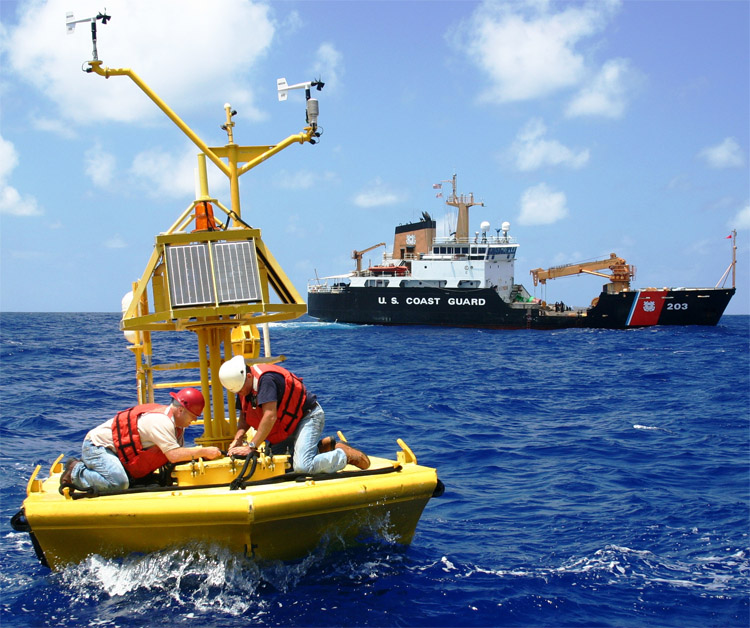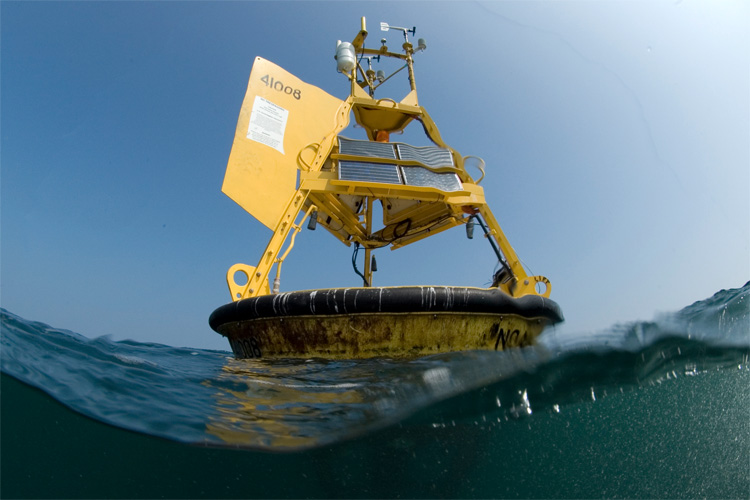Ocean buoys measure a whole range of weather variables such as wave height, swell period and direction, wind speed and direction, air and water temperature, and barometric pressure.
These heavy and colored weather stations are usually placed by national meteorological centers in the open ocean.
In the United States, the National Oceanic and Atmospheric Administration (NOAA) is the organization responsible for deploying and operating weather buoys and collecting data from each floating device.
NOAA manages more than 1,300 buoys. They've been strategically deployed in both the Atlantic and Pacific oceans.
With the help of advanced computing systems, meteorological authorities are able to track and predict multiple weather events, including high surf, extreme temperatures, floods, gusty winds, precipitation, hurricanes, cloud formations, etc.
An ocean buoy serves many purposes.
It can activate emergency alerts and warnings of all sorts targeted at densely populated coastal areas, cargo ships, aviation, fishing communities, offshore drilling platforms, underwater operations, surfers, and many other activities.
Ocean buoys are equipped with an array of sensors that measure all the parameters of air and water.
The information collected by the buoys later gets a visual representation of what is happening.

Real-Time Ocean Forecast Models
These representations are called models.
There are many ways of showing them, but with the latest computer technology, you can easily "read" them in user-friendly animated swell charts and wind maps.
The most popular mathematical models are the Global Forecast System (GFS), the Integrated Forecast System (IFS), the North American Mesoscale Model (NAM), and the Weather Research and Forecasting (WRF).
Real-time measurements recorded by the surf buoys can also deliver directional spectra observations, but wave buoys don't make predictions - they only make measurements.
These measurements are used in model runs, which calculate the conditions at a given time and predict the wave and wind variables up to seven days ahead.
Models will also add up other relevant factors, including refraction and shoaling effects so that we can get reliable surf forecasts for our coastal areas.
One last word: oil platforms, cargo ships, and even lighthouses can also work as buoys and send air and water information to mathematical weather models.
Check out their latest measurements on the chart below. Also, find your nearest weather station on the ocean buoy map.
